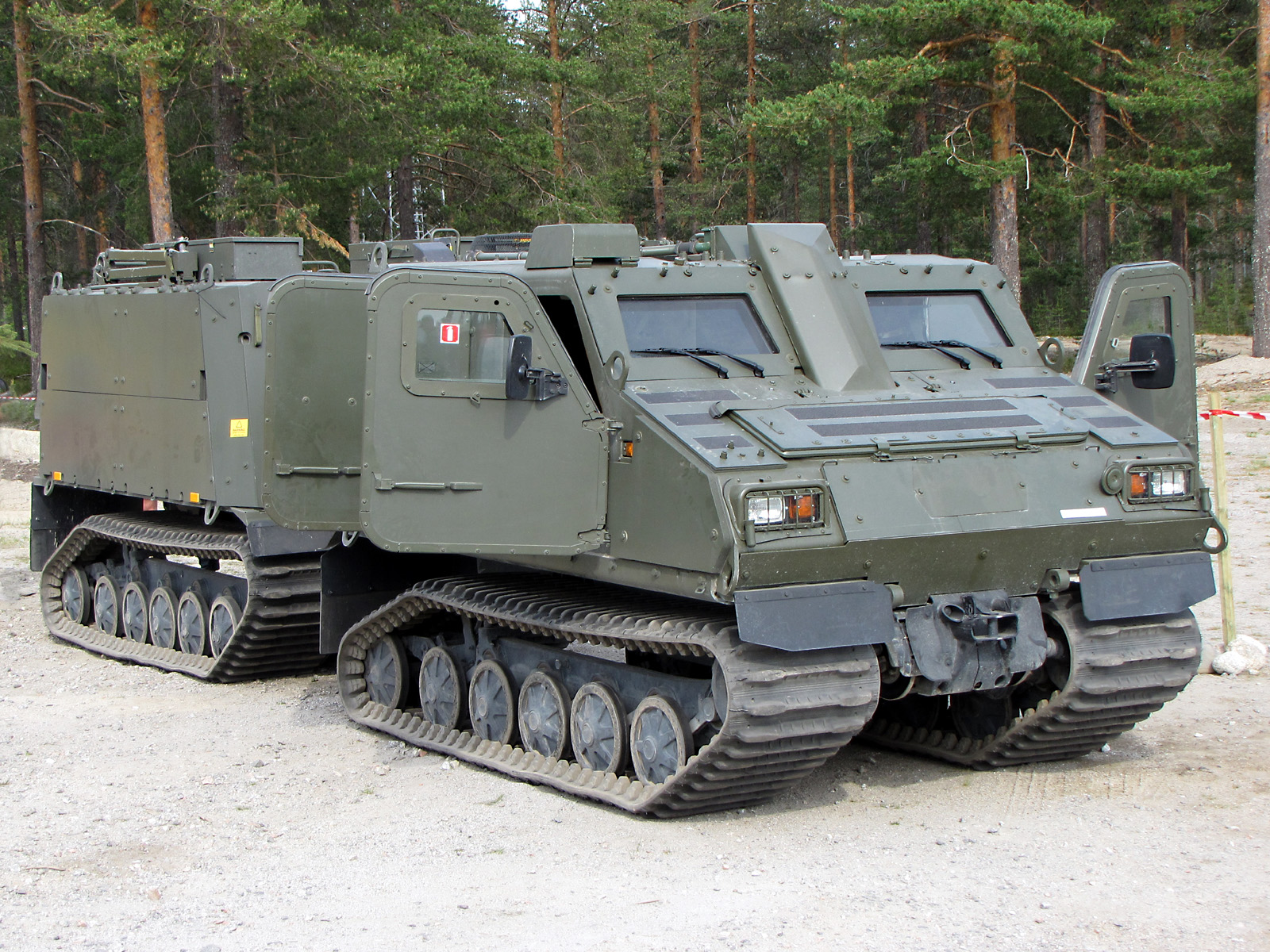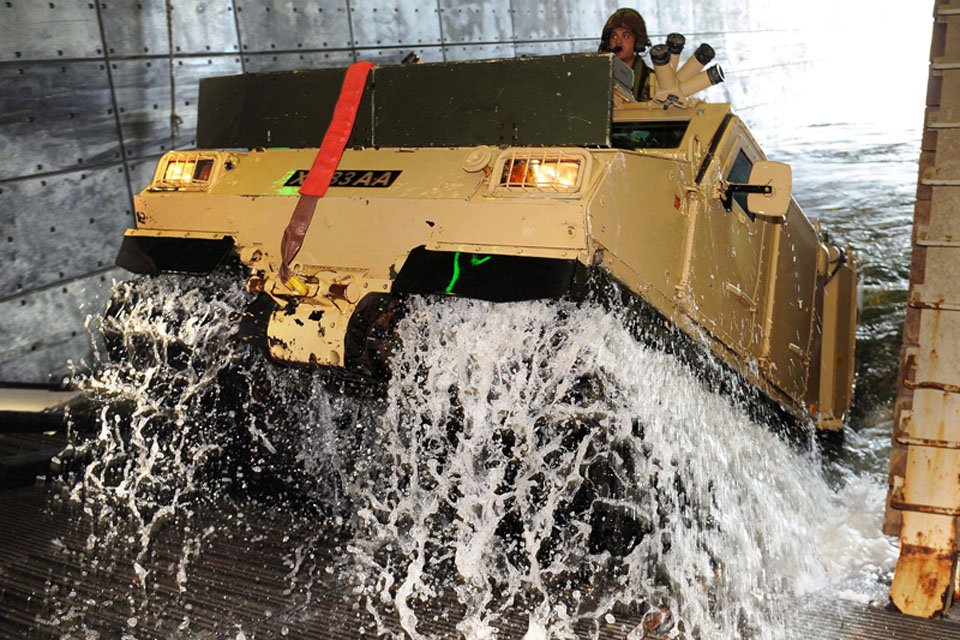- Reaction score
- 8,198
- Points
- 1,160
While we are in the game of opining....
I wonder if there is any appetite to move the DAME project timelines forwards. One reason for wondering is the confluence of policy
and technology
 .
.
This is the new BAE Hagglunds BvS10 Beowulf - an UNarmoured version of the Viking used by the Royal Marines and the Royal Netherlands Marines.
In 1987 Perrin Beatty, in his Challenge and Commitment white paper, to anchor his Domestic Force (The SSF + Militia Brigades + Vital Point troops (Security Guards with Guns)) on a mixed fleet of

820 to be purchased and built in Calgary by Foremost
And 199 of these (or similar)

I thought then, and I still think, that on that score Minister Beatty had it about right.
The Bv206, supplied to the Militia Service Battalions across the country, and prepositioned in the north, would make for a "poor man's helicopter", supplying a platform that would access the 70% of the country that isn't accessible by road and would permit access when the roads are impassable, as during domestic disasters. It would also permit realistic off-road training by both regs and reserves. And finally, it is an excellent expeditionary vehicle being transportable by air and can swim off a ship.
Unfortunately the Bv206, although more than 10,000 were built, was taken out of production and allowed to become obsolete. And the only way to acquire the capability was to buy armoured vehicles, in particular the Viking.

In Afghanistan the value of the vehicle was demonstrated by both the PPCLI and the Royal Marines (in armoured form). That spurred a renewed interest which generated competition in the form of the Singapore Technologies / General Dynamics competitor, the Bronco. Also armoured.
While both the Viking and Bronco are apparently great pieces of kit they suffer from being armoured. This drives up purchase price and operating costs. It also drives down payload, mobility and transportability.
What was missing was an unarmoured, cheap, replacement for the original Bv206. The Beowulf is apparently that replacement - 30 years in the making.
Additional info is available at these links:
http://www.military-today.com/trucks/bvs10_beowulf.htm
http://www.armyrecognition.com/united_kingdom_british_army_light_armoured_vehicle/bvs10_beowulf_all-terrain_tracked_vehicle_technical_data_sheet_specifications_description_pictures_video_12509156.html
As noted above Beatty proposed a fleet of 820 Bv206s and 199 Bisons. I think his numbers are still about right. But instead of the Bv206s and Bisons I would be proposing Beowulfs and Vikings - in the same strengths.
A Transport Platoon of 30 to 40 Beowulfs in each Territorial Battalion Group would permit training and a quick response to domestic emergencies. Together with prepositioned vehicles in the north at the Air Forces FOLs, Resolute and Nanisivik that adds up to 300 to 500 vehicles. Put some more into the Regs hands, some in storage and some onboard the CSCs..... ...... some armoured and you quickly find yourself back up around the 1000 vehicle mark.
...... some armoured and you quickly find yourself back up around the 1000 vehicle mark.
And if you don't like the Hagglunds, we can always get a Canadian made knock-off through General Dynamics supplying Singapore Technologies new UNarmoured version of the Bronco, the Extremv

I know it is to dream, and I know we must wait for the new white paper in 2017 but ..... in the words of my daughter, "Maaaaaaybe".



I wonder if there is any appetite to move the DAME project timelines forwards. One reason for wondering is the confluence of policy
http://pm.gc.ca/eng/minister-national-defence-mandate-letterRenew Canada’s focus on surveillance and control of Canadian territory and approaches, particularly our Arctic regions, and increase the size of the Canadian Rangers.
and technology

This is the new BAE Hagglunds BvS10 Beowulf - an UNarmoured version of the Viking used by the Royal Marines and the Royal Netherlands Marines.
In 1987 Perrin Beatty, in his Challenge and Commitment white paper, to anchor his Domestic Force (The SSF + Militia Brigades + Vital Point troops (Security Guards with Guns)) on a mixed fleet of

820 to be purchased and built in Calgary by Foremost
And 199 of these (or similar)

I thought then, and I still think, that on that score Minister Beatty had it about right.
The Bv206, supplied to the Militia Service Battalions across the country, and prepositioned in the north, would make for a "poor man's helicopter", supplying a platform that would access the 70% of the country that isn't accessible by road and would permit access when the roads are impassable, as during domestic disasters. It would also permit realistic off-road training by both regs and reserves. And finally, it is an excellent expeditionary vehicle being transportable by air and can swim off a ship.
Unfortunately the Bv206, although more than 10,000 were built, was taken out of production and allowed to become obsolete. And the only way to acquire the capability was to buy armoured vehicles, in particular the Viking.

In Afghanistan the value of the vehicle was demonstrated by both the PPCLI and the Royal Marines (in armoured form). That spurred a renewed interest which generated competition in the form of the Singapore Technologies / General Dynamics competitor, the Bronco. Also armoured.
While both the Viking and Bronco are apparently great pieces of kit they suffer from being armoured. This drives up purchase price and operating costs. It also drives down payload, mobility and transportability.
What was missing was an unarmoured, cheap, replacement for the original Bv206. The Beowulf is apparently that replacement - 30 years in the making.
Additional info is available at these links:
http://www.military-today.com/trucks/bvs10_beowulf.htm
http://www.armyrecognition.com/united_kingdom_british_army_light_armoured_vehicle/bvs10_beowulf_all-terrain_tracked_vehicle_technical_data_sheet_specifications_description_pictures_video_12509156.html
As noted above Beatty proposed a fleet of 820 Bv206s and 199 Bisons. I think his numbers are still about right. But instead of the Bv206s and Bisons I would be proposing Beowulfs and Vikings - in the same strengths.
A Transport Platoon of 30 to 40 Beowulfs in each Territorial Battalion Group would permit training and a quick response to domestic emergencies. Together with prepositioned vehicles in the north at the Air Forces FOLs, Resolute and Nanisivik that adds up to 300 to 500 vehicles. Put some more into the Regs hands, some in storage and some onboard the CSCs.....
And if you don't like the Hagglunds, we can always get a Canadian made knock-off through General Dynamics supplying Singapore Technologies new UNarmoured version of the Bronco, the Extremv

I know it is to dream, and I know we must wait for the new white paper in 2017 but ..... in the words of my daughter, "Maaaaaaybe".










